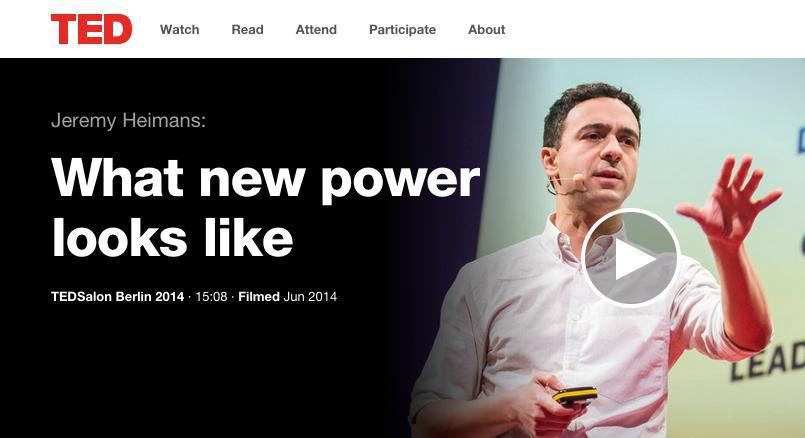

I think one dynamic is that you’ve got a new generation in the workforce who have radically different expectations around how much they should participate in the workplace and who expect different kinds of feedback. That was why we created this new and old power vocabulary. We wanted to move the conversation from one narrowly focused on technology to a more substantial conversation about power. We were finding we would get asked questions all the time like: “Did Twitter cause the Arab Spring?” To us, that was completely the wrong question. We were interested in creating something that was independent and that represented a set of values rather than a tribal affiliation.Ībout four years ago, I met a colleague in New York who was working in a related but different space.

Neither David nor I were ever members of a political party. It was deep expression of democratic participation. The government’s reaction was to pillory it as spam, when actually this was just ordinary Australians to politicians. We created an online tool to make it easier for people to write to their senators. The idea was to give people direct ways to participate in politics and democracy and to share their views with elected representatives. It’s a bit of a catch-all course for anyone who is interested in social change.ĭavid Madden and I started GetUp! in 2005. I did a master’s in public policy at the Kennedy School of Government at Harvard. Jeremy Heimans, author of New Power, says he was drawn to work that was more entrepreneurial than working his way up through a big organisation. I think that is why I was drawn to work that was more entrepreneurial than working in a big organisation. Dad is mostly retired now but he was an independent documentary filmmaker. My mum came here from Lebanon in the 1960s. I grew up on the sleepy north shore in Sydney. Here, Jeremy Heimans speaks to Sally Patten. They compare the 20th-century power norms, characterised by leader-driven, closely guarded power, to the 21st-century model, which is open, peer driven and exemplified by the #MeToo movement.


In their book, New Power, Jeremy Heimans, a co-founder of activist group GetUp!, and Henry Tims discuss how technology and the rise of mega platforms have combined to change the power dynamics of the workforce.


 0 kommentar(er)
0 kommentar(er)
